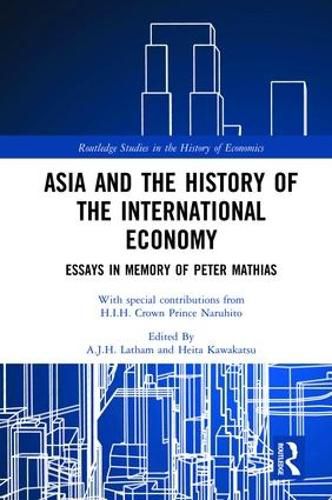Readings Newsletter
Become a Readings Member to make your shopping experience even easier.
Sign in or sign up for free!
You’re not far away from qualifying for FREE standard shipping within Australia
You’ve qualified for FREE standard shipping within Australia
The cart is loading…






This collection of essays sheds new light on many aspects of Asia’s integration with the international economy. H.I.H. Crown Prince Naruhito discusses the problems of controlling water in the interest of urban development. He first examines the problems encountered on the River Thames in relationship to the growth of London in the eighteenth century, and then relates his findings to Japan where similar problems arose with respect to the expansion of Edo (Tokyo). Other chapters looking at the eighteenth century examine the development of plant collecting in Asia and the wider world in the interest of the economy and leisure, Japan’s connections with the outside world by way of the Dutch East India Company (VOC), and the Dutch acquisition of the knowledge of the Japanese language at their base at Dejima Island, Nagasaki. India features next with a chapter showing how India was crucial in initiating the industrial revolution in Britain, by stimulating British manufacturers to copy the fine textiles made by hand loom weavers there. This is followed by a chapter showing how in the late nineteenth century India was the central pivot in the entire international economic system, based on its trading surplus with China. Other discussions trace the role of Scotland as a centre of heavy industry and shipbuilding, with Scottish companies dominating the shipping lanes of Asia. A further chapter shows how British connections with Asia, in this case Shanghai, brought problems of debt and non payment, and outlines the steps taken to try to control the situation. Elsewhere problems arose in Bangkok over the quality of rice being supplied to European merchants in the 1920s, leading to a decline in sales. Finally there is a discussion of Japanese commercial policy towards Africa in the inter-war period. This book will be of interest and use to students, researchers, and general readers interested in Asia’s role in world economic development.
$9.00 standard shipping within Australia
FREE standard shipping within Australia for orders over $100.00
Express & International shipping calculated at checkout
This collection of essays sheds new light on many aspects of Asia’s integration with the international economy. H.I.H. Crown Prince Naruhito discusses the problems of controlling water in the interest of urban development. He first examines the problems encountered on the River Thames in relationship to the growth of London in the eighteenth century, and then relates his findings to Japan where similar problems arose with respect to the expansion of Edo (Tokyo). Other chapters looking at the eighteenth century examine the development of plant collecting in Asia and the wider world in the interest of the economy and leisure, Japan’s connections with the outside world by way of the Dutch East India Company (VOC), and the Dutch acquisition of the knowledge of the Japanese language at their base at Dejima Island, Nagasaki. India features next with a chapter showing how India was crucial in initiating the industrial revolution in Britain, by stimulating British manufacturers to copy the fine textiles made by hand loom weavers there. This is followed by a chapter showing how in the late nineteenth century India was the central pivot in the entire international economic system, based on its trading surplus with China. Other discussions trace the role of Scotland as a centre of heavy industry and shipbuilding, with Scottish companies dominating the shipping lanes of Asia. A further chapter shows how British connections with Asia, in this case Shanghai, brought problems of debt and non payment, and outlines the steps taken to try to control the situation. Elsewhere problems arose in Bangkok over the quality of rice being supplied to European merchants in the 1920s, leading to a decline in sales. Finally there is a discussion of Japanese commercial policy towards Africa in the inter-war period. This book will be of interest and use to students, researchers, and general readers interested in Asia’s role in world economic development.